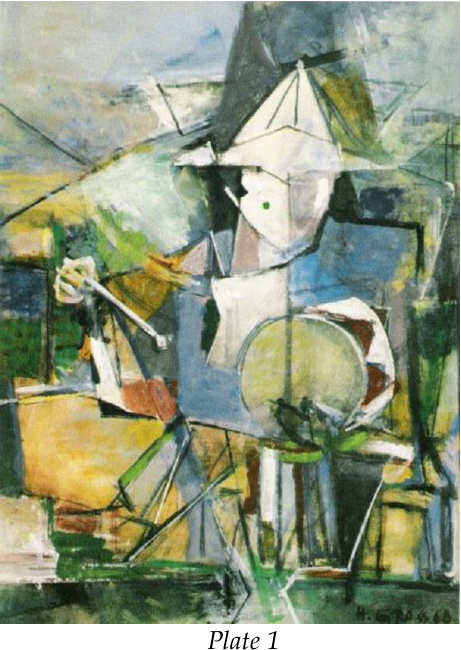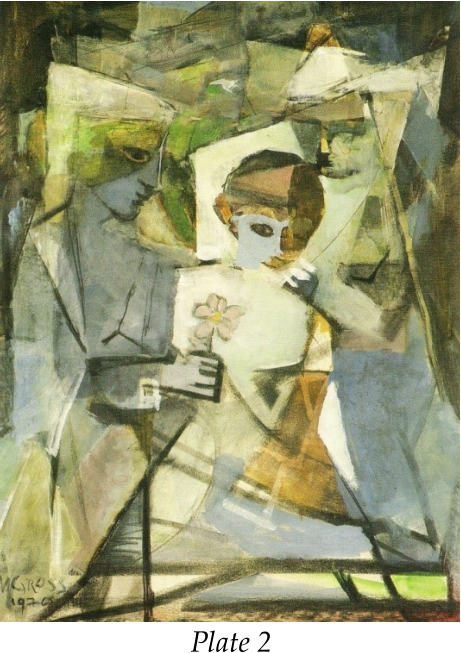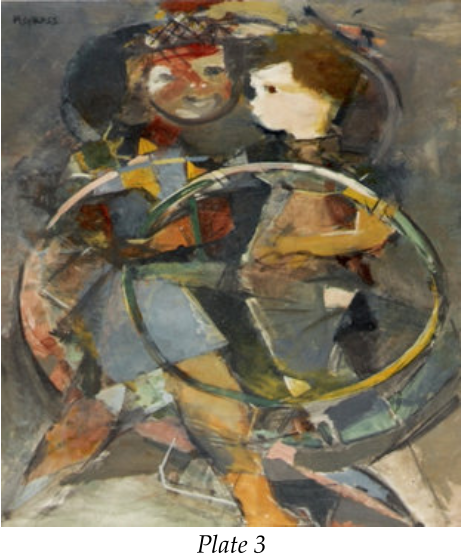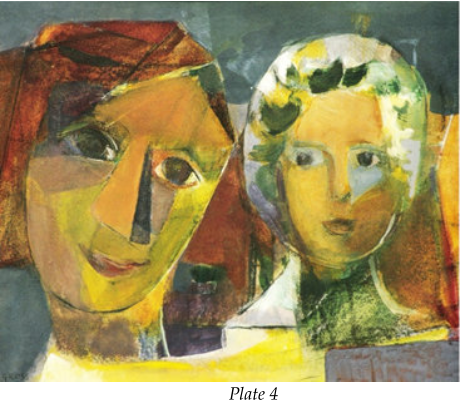Scotland
In 1963, Gross decided to leave Germany and move to Scotland. Knowledge of
Gross’s work had been communicated through a network of friends to Dr Karl
Koenig, co-founder of the Camphill Movement. As a result of a meeting between
Koenig and Gross, an invitation was extended to Gross to come to Scotland. Gross
and Koenig not only shared a common language but also both recognized and
valued the spiritual dimension in art and ways of seeking to give artistic expression
to the human spirit.
One of the reasons that Dr Koenig invited Gross to Aberdeen was to create a number
of sculptures for the newly constructed Camphill Hall that was to be the spiritual
heart of the Camphill Movement. Plate One shows Michael the Archangel
representing peace and harmony, whilst Plate Two shows Raphael the Archangel
representing healing. The significance of these sculptures may reflect Dr Koenig’s
wish to develop at Camphill the discipline of curative education.
It is known that in the mid-1960s when he was considering the design of and method
of creating the stained-glass windows for Camphill Hall, he had visited Pluscarden
Abbey, a Benedictine Abbey in Morayshire. As virtually all the original stained glass
of the old abbey had been lost it was necessary to create new windows.
A new technique had been introduced which involved cutting and faceting thick
slabs of glass known as dalles de verre and setting them in a matrix of either epoxy
resin or concrete. An appealing feature of this method which was recognised by the
monks was the way in which the windows sparkled like jewels when in direct
sunlight.
The dominant feature in both stained glass windows is the Y figure. Throughout late
antiquity, the Y was an accepted pagan symbol of the choice between the hard path
of virtue (right) and the easy path of vice (left). The Y can also be seen as a tree
symbol related to the Christian cross and the Greek letter T (tau). Paintings in 15th
century Northern Europe often depicted the cross in Crucifixion scenes as a Tau cross
(e.g., Rogier van der Weyden, The Descent from the Cross, 1435). More significant
perhaps is the fact that Christ’s body would have assumed a Y shape given that his
wrists (not hands) were nailed to the horizontal cross beam. Whether or not there
was a mercy seat and/or platform upon which Christ’s feet rested, the weight of his
body would have led to a Y shape configuration. So, Gross may be alluding to
Christ’s agony on the cross.
Unlike many stained-glass windows or memorials, the abstract and three-
dimensional nature of the Camphill Hall windows brings them to life and makes a
strong, memorable, and vibrant visual impact.
In the immediate aftermath of the war, Gross’s paintings had been explicitly religious
in content and were acknowledged by him to represent a working out of his own
inner emotional and spiritual turmoil. But with the passage of time and particularly
from the moment he assumed the role of artist-in-residence in Camphill the character
of his work underwent change.
Children as subjects in the art of Gross
As artist-in-residence at Camphill, Gross was able to show how art could provide a
powerful way of communicating profound insights about the nature of childhood to
those charged with the responsibility of caring for children and young people with
special needs.
Not only did Gross take children as his main subjects, but he went one step further
and encouraged the viewer to reflect upon the transient nature of childhood and all
the vulnerabilities inherent in it.
A distinctive feature of his work is that he did not give titles to any of his work as he
believed that attributing a title served as a distraction. His aim was for viewers to
arrive at their own interpretation and not be side-tracked by labels.
What is striking about Gross’s work is the way in which it seeks to address some of
the dilemmas faced by those caring for children. He was able to identify with many
often traumatised and bewildered children possibly because of his experiences
during the war when. He never fully recovered from this experience and something
of this continuing inner turmoil can be found in his paintings. Nevertheless in the
paintings he was able to communicate a strong, positive, and life-affirming message
to those working daily with the children in their care.
Gross was able to demonstrate how art can provide an effective medium for
conveying complex ideas about the nature of childhood and indicate possible ways of
nurturing and caring for vulnerable children. It is important to note that Gross never
gave titles to his paintings. He left it to viewers to place their own interpretation on
what they saw.
A significant feature of Camphill life is illustrated in Plate 1. In attempting to
communicate effectively with a child, the carer has to fall into step with the child, so
that they ‘dance to the same tune’. It is necessary, therefore, to listen to the ‘beat’ that
the child provides. The child and the carer then search for ways to establish and
maintain that joint rhythm, in a mutually inclusive way. It is necessary to learn to
listen, look, and explore in a new way, the pulse of groups with whom one works.
Rhythm is crucially important for it provides the impulse and framework that
enables often bewildered and disoriented children to experience for the first time a
measure of stability and security.
Rhythm is the living pulse that sustains the work of a healthy and healing
community. But the binding qualities of rhythm must not be confused with the
lockstep quality of the single drummer’s efforts to ensure conformity. True
rhythmicity, in contrast, requires a process of mutual engagement and inclusion, a
response to the beat of several drummers.
The dominant feature in Plate 2 is the eye of the child which looks out at and invites
the viewer into the painting. The subdued tones used in this palette convey an
impression of a tender and caring relationship between the child and the two adults –
possibly nurses – who stand on either side of him. There is no mawkish
sentimentality in this relationship. The painting successfully encapsulates the essence
of Camphill philosophy and practice, where the child is placed at the centre of its
work.
Gross’s experience of living in a community dedicated to the care of vulnerable
children and young people enabled him to communicate in a direct way the tender
and supportive character of the adult-child relationship.
In Plate 3, which shows two children playing, Gross may be wishing to remind adult
viewers of the importance of play in a child’s life. It is not an incidental and trivial
activity but an important part of a child’s physical, social, and moral development for
play is the natural way for children to make sense of, and internalise, a whole range
of experiences. It offers the opportunity to explore ways of being, of establishing
identity and building self-esteem. The way the children’s bodies intersect
geometrically may be intended to convey the importance of social interaction. The
smile on the face of the child wearing the tartan bonnet is perhaps a reminder that
play is meant to be an enjoyable experience. The content of this painting has a strong
contemporary relevance. Play, whether formalised within the context of games or
recreational activities or stemming from the creative imagination of the individual
child, sadly has little place in the present-day mainstream curriculum. As a result, the
child experiences educational, cultural, and social impoverishment. But as Gross was
seeking to show an individual’s spiritual development is dependent upon
opportunities for free and creative self-expression.
In Plate 4 we have the juxtaposition of the angular mask-like face of a woman with
the more realistically portrayed face of a child. What is Gross seeking to
communicate here? Is he suggesting that in the presence of children adults tend to
conceal their identity behind a mask? The child appears to be slightly behind the
woman and looking questioningly at her.
Children often find the behaviour of adults difficult to comprehend. Is Gross
intimating that the care offered by the adult has to be genuine and unconditional and
not feigned – not least because most children are sophisticated enough to make that
distinction? Whilst adults may attempt to hide behind a mask, children can
frequently see through it.
In the immediate aftermath of the war Gross’s paintings were explicitly religious in
content and were acknowledged by him to represent a working out of his own inner
emotional and spiritual turmoil. They were classic examples of German Expressionist
art. With the passage of time and particularly from the moment he assumed the role
of artist-in-residence in Camphill, the character of his work underwent a change.
The two themes of ‘masks and masquerades’ and ‘children in care’, which feature in
Gross’s work, pose questions about identity and mission: ‘Who am I?’ and ‘What is
my purpose?’ It is difficult to think of two more fundamental questions for anyone to
consider. However, long before the notion of ‘the reflective practitioner’ became part
of common professional parlance, Camphill co-workers were being constantly
encouraged to engage in professional reappraisal and spiritual reflection. Thus, they
were likely to be attuned to what Gross was seeking to communicate with them.
Whilst Gross may have had a target audience in mind, the content of his paintings
has a universal relevance and value. It needs to be remembered that these paintings
were not hanging in an art gallery but were located throughout the Community and
thus were constantly visually accessible.
The work of Hermann Gross is significant because it focuses on a neglected subject in
art – the child. He succeeds in different ways in capturing some of the quintessential
features of childhood which now appear to be under threat. For example,
opportunities for unsupervised play and recreation are limited by the growth of a
risk-averse culture which tends to extinguish spontaneity, creativity, and enjoyment.
At school, children are increasingly subject to a utilitarian approach to education
which emphasises the acquisition of certain basic skills and which attaches little
value to seeking ways of enhancing a child’s physical, social, and spiritual well-
being. Children also represent an extremely lucrative target for the omnipotent and
omnipresent marketing industry which, for commercial reasons, quite deliberately
exploits their susceptibilities. A report by the Children’s Society in 2006 indicated
that the state of childhood which had been the focus of Gross’s work was ‘under
threat’ or ‘disappearing’.
The significance of Gross’s work, which is sometimes subversive, often provocative
and always instructive, is that it illustrates the value of art as a way of
communicating profound insights about the nature of childhood to those charged
with the awesome responsibility of caring for children and young people. It also
provides us with a timely reminder of the precious nature of childhood and what we,
as a society, may be in danger of losing.
Gross’s work has remained generally unknown principally because he saw his
primary responsibility as that of acting as an artist-in-residence; producing art that
could be encountered in corridors, committee rooms and public halls throughout the
community.
A late discovery
A short time after the biography of Hermann Gross was published in 2008 an email
was received from the USA conveying some intriguing news. A large number of
paintings had been discovered in the attic of a house in Vermont which had formerly
belonged to Hildegard Rath. What the owner of the house did not know was that
Hildegarde Rath had been the first wife of Hermann Gross. Someone acquainted
with the new owner of the house and who knew of Robin Jackson’s interest in the life
and work of both Hildegarde Rath and Hermann Gross, made contact. The
information was passed on that among many paintings found in the attic there were
two particularly large ones which were clearly not painted in the style of Rath.
Photographs of both paintings were sent to Scotland and were easily identified, not
simply because of their style and subject matter but because Gross’s monogram was
clearly visible at the bottom of each painting!
The painting illustrated here is of ‘The Annunciation’ where the Archangel Gabriel
announces to Virgin Mary the incarnation of Christ. This is one of the most frequent
subjects of artistic representation in both eastern and western Christian traditions. An
unusual feature in this painting is that both Mary and Gabriel are wearing halos, a
practice that was discontinued when artists sought to bring realism to their work.
What is interesting in Gross’s painting is that Mary is not wearing the royal blue robe
which features in most paintings of the Annunciation – Fra Angelico (1450),
Leonardo da Vinci (12472-5), Botticelli (1490), El Greco (1575). Here it lies on the
ground.
There can be little doubt that the focal point in this painting is the head of the lily
which seems to shimmer in a heat haze. Perhaps no other flower has more symbolic
associations than the lily. Indeed separate parts of the lily have been accorded
specific religious significance: the stem is said to symbolise Mary’s religious
faithfulness; the white petals stand for her purity and virginity; the stem represents
her divinity; and the leaves signify her humility.
At the same time, the lily – the funeral flower – symbolizes the departure of the soul
in death. Is the lily which is resting on the royal blue robe communicating another
message? Is the purplish glow where the lily stem touches the robe meant to indicate
that some powerful heavenly force is being transmitted through the lily stem to the
robe? And is there a faint likeness to a face in the robe itself where the end of the
stem touches the robe? In other words, is there a reference here to Christ’s bloodied
shroud? Is this purple stain a reminder of the purple robe that was offered by the
Roman centurion to Christ – the ‘King of the Jews’ – prior to his Crucifixion? And is
the fact that the robe itself resembles the shape of a mountain significant? Is this a
visual allusion to Mount Calvary where Christ was crucified?
Final thoughts
The time is long overdue for Gross’s talents as a sculptor, painter, and stained-glass
maker to be more widely recognised. Why is his work not more widely known? Part
of the answer lies in his decision to spend the latter part of his life working modestly
as an artist-in-residence in a small school in the North East of Scotland remote from
the artistic and intellectual heartlands of Paris, Berlin and New York. When Gross
came to Scotland, he abandoned a career in the ordinary sense of the word, for a
large part of a professional artist’s life is often devoted to seeking a market for his
work. Freed from concerns about remuneration, Gross no longer saw his works as
commodities for sale. It was in a Camphill community that he experienced one of his
most productive periods.
It is not unusual for a full appreciation of the unique qualities of an artist to be
delayed until some time after death. Such is the case with Hermann Gross. It is to be
hoped that what has been presented here demonstrates his supreme technical ability,
extraordinary versatility, and creative imagination. As Aline Louchheim, the doyenne
of New York art critics, observed in 1951, Gross was not only a true descendant of the
German Expressionist school but also someone who used that art form to
communicate a powerful spiritual message which was relevant to contemporary
society. His art continues to communicate that message.
Hermann Gross died on the 1st September 1988. A memorial tablet to Hermann
Gross and his wife, Trude, is located in the churchyard of Maryculter Parish Church,
Kincardineshire. The churchyard looks north over the River Dee and to the place
where Camphill was born in 1940.
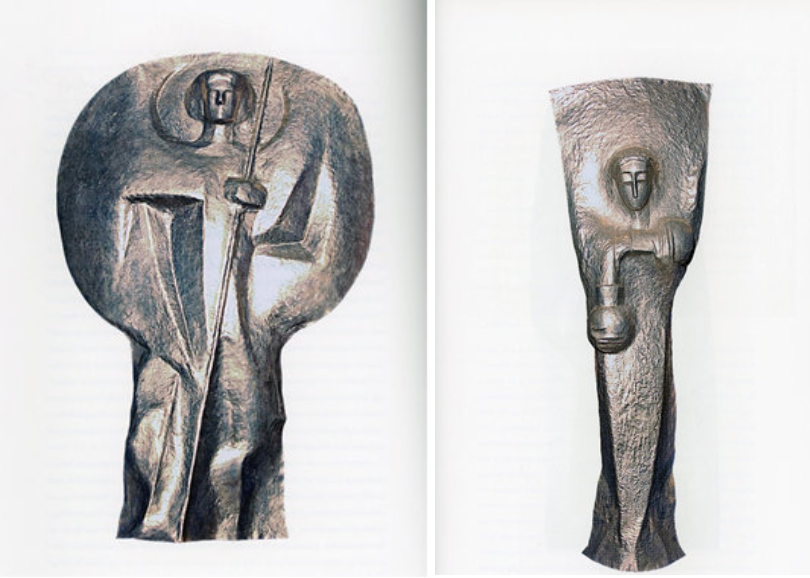
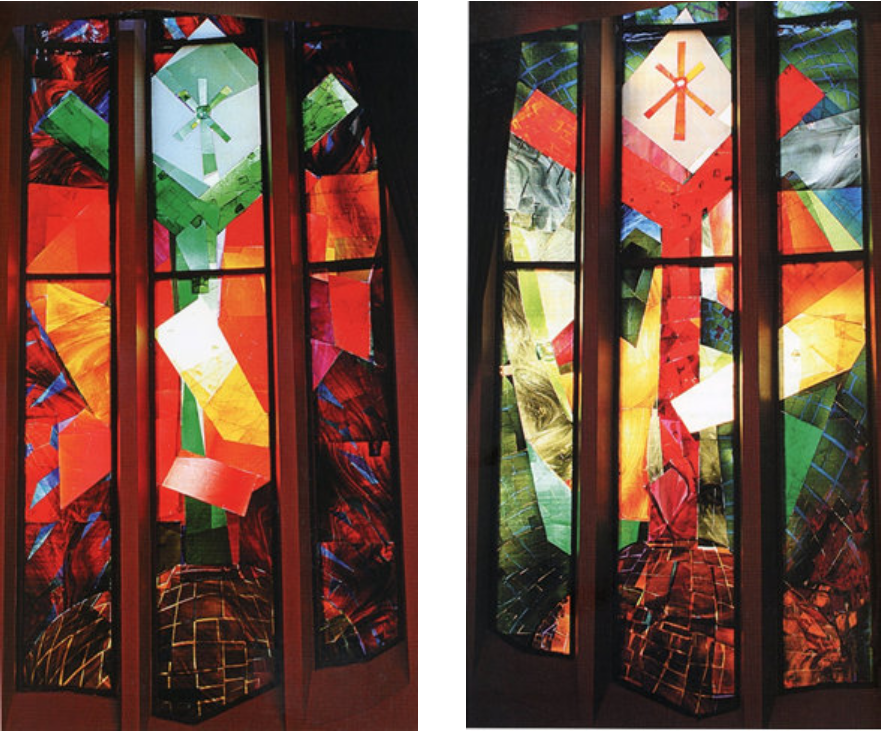
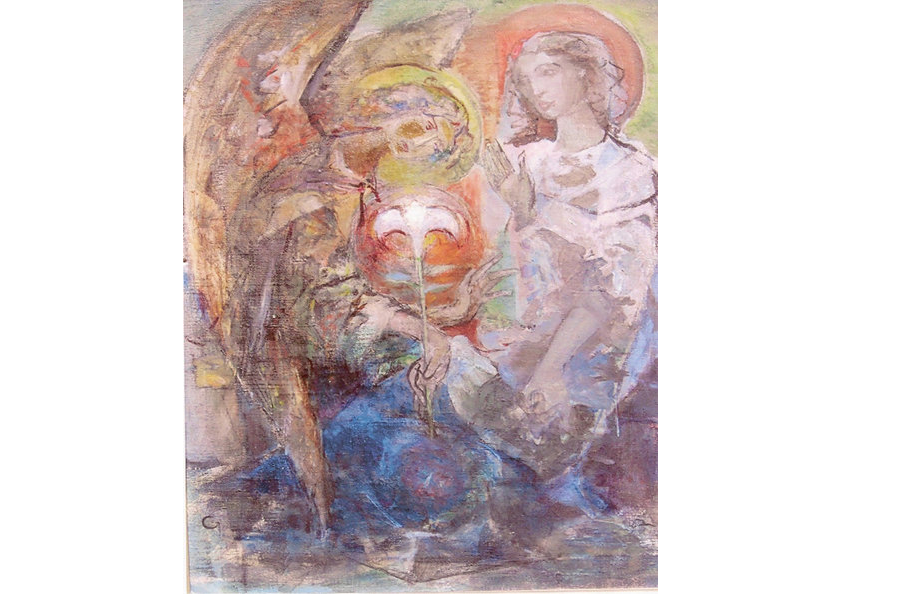
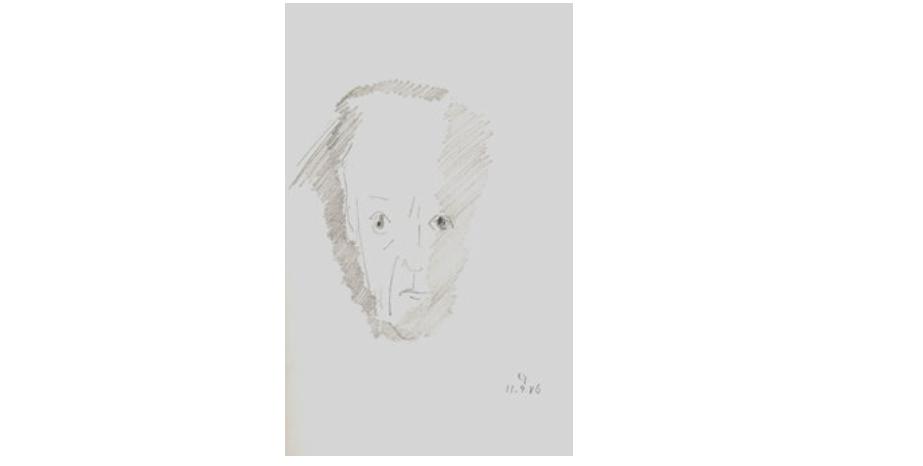

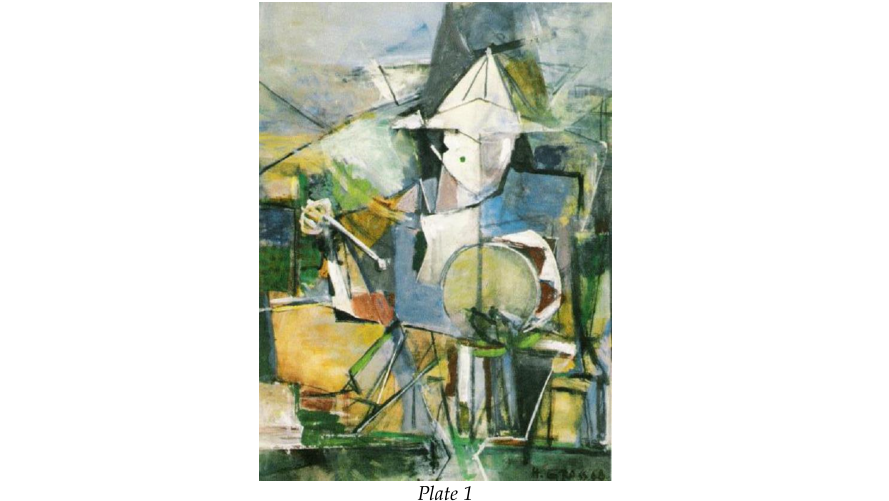
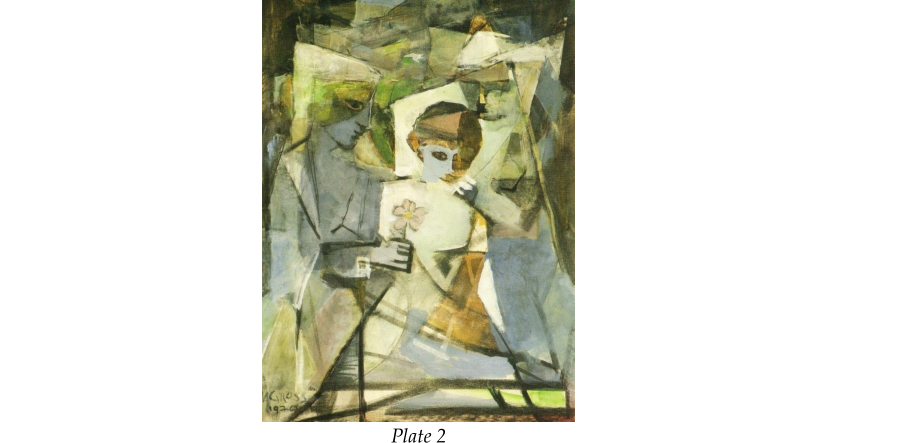
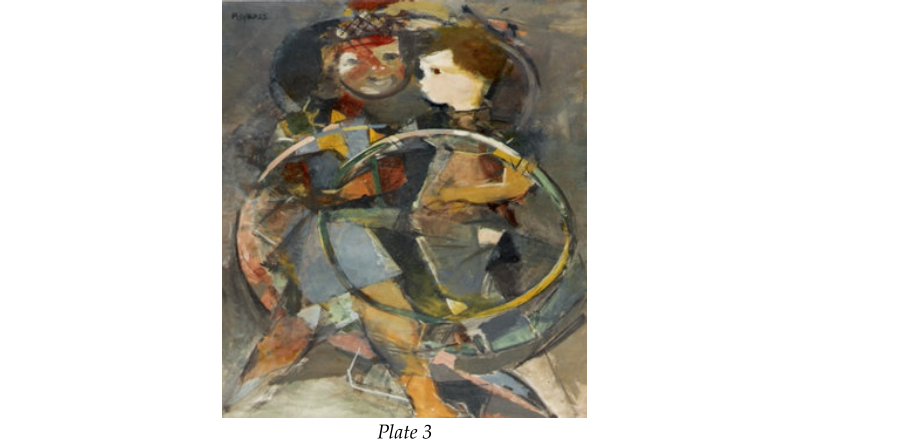
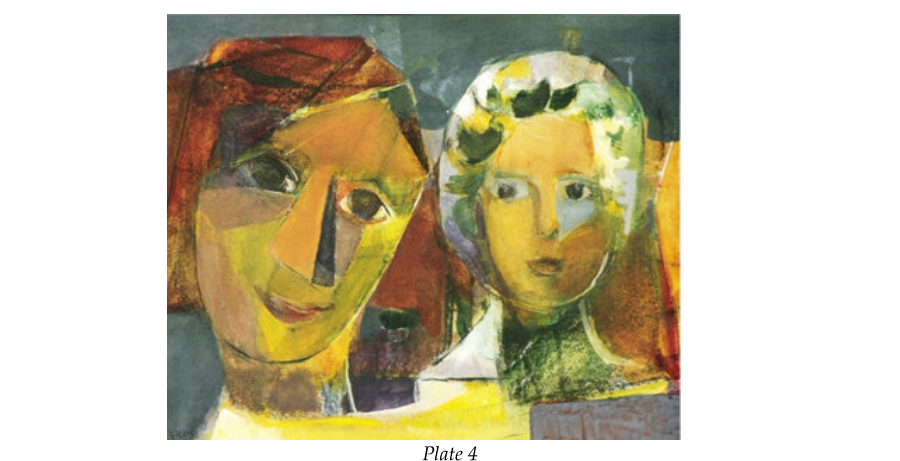
Scotland
In 1963, Gross decided to leave Germany
and move to Scotland. Knowledge of
Gross’s work had been communicated
through a network of friends to Dr Karl
Koenig, co-founder of the Camphill
Movement. As a result of a meeting
between Koenig and Gross, an invitation
was extended to Gross to come to Scotland.
Gross and Koenig not only shared a
common language but also both
recognized and valued the spiritual
dimension in art and ways of seeking to
give artistic expression to the human spirit.
One of the reasons that Dr Koenig invited
Gross to Aberdeen was to create a number
of sculptures for the newly constructed
Camphill Hall that was to be the spiritual
heart of the Camphill Movement. Plate
One shows Michael the Archangel
representing peace and harmony, whilst
Plate Two shows Raphael the Archangel
representing healing. The significance of
these sculptures may reflect Dr Koenig’s
wish to develop at Camphill the discipline
of curative education.
It is known that in the mid-1960s when he
was considering the design of and method
of creating the stained-glass windows for
Camphill Hall, he had visited Pluscarden
Abbey, a Benedictine Abbey in
Morayshire. As virtually all the original
stained glass of the old abbey had been lost
it was necessary to create new windows.
A new technique had been introduced
which involved cutting and faceting thick
slabs of glass known as dalles de verre and
setting them in a matrix of either epoxy
resin or concrete. An appealing feature of
this method which was recognised by the
monks was the way in which the windows
sparkled like jewels when in direct
sunlight.
The dominant feature in both stained glass
windows is the Y figure. Throughout late
antiquity, the Y was an accepted pagan
symbol of the choice between the hard
path of virtue (right) and the easy path of
vice (left). The Y can also be seen as a tree
symbol related to the Christian cross and
the Greek letter T (tau). Paintings in 15th
century Northern Europe often depicted
the cross in Crucifixion scenes as a Tau
cross (e.g., Rogier van der Weyden, The
Descent from the Cross, 1435). More
significant perhaps is the fact that Christ’s
body would have assumed a Y shape given
that his wrists (not hands) were nailed to
the horizontal cross beam. Whether or not
there was a mercy seat and/or platform
upon which Christ’s feet rested, the weight
of his body would have led to a Y shape
configuration. So, Gross may be alluding
to Christ’s agony on the cross.
Unlike many stained-glass windows or
memorials, the abstract and three-
dimensional nature of the Camphill Hall
windows brings them to life and makes a
strong, memorable, and vibrant visual
impact.
In the immediate aftermath of the war,
Gross’s paintings had been explicitly
religious in content and were
acknowledged by him to represent a
working out of his own inner emotional
and spiritual turmoil. But with the passage
of time and particularly from the moment
he assumed the role of artist-in-residence
in Camphill the character of his work
underwent change.
Children as subjects
in the art of Gross
As artist-in-residence at Camphill, Gross
was able to show how art could provide a
powerful way of communicating profound
insights about the nature of childhood to
those charged with the responsibility of
caring for children and young people with
special needs.
Not only did Gross take children as his
main subjects, but he went one step further
and encouraged the viewer to reflect upon
the transient nature of childhood and all
the vulnerabilities inherent in it.
A distinctive feature of his work is that he
did not give titles to any of his work as he
believed that attributing a title served as a
distraction. His aim was for viewers to
arrive at their own interpretation and not
be side-tracked by labels.
What is striking about Gross’s work is the
way in which it seeks to address some of
the dilemmas faced by those caring for
children. He was able to identify with
many often traumatised and bewildered
children possibly because of his
experiences during the war when. He
never fully recovered from this experience
and something of this continuing inner
turmoil can be found in his paintings.
Nevertheless in the paintings he was able
to communicate a strong, positive, and life-
affirming message to those working daily
with the children in their care.
Gross was able to demonstrate how art can
provide an effective medium for conveying
complex ideas about the nature of
childhood and indicate possible ways of
nurturing and caring for vulnerable
children. It is important to note that Gross
never gave titles to his paintings. He left it
to viewers to place their own
interpretation on what they saw.
A significant feature of Camphill life is
illustrated in Plate 1. In attempting to
communicate effectively with a child, the
carer has to fall into step with the child, so
that they ‘dance to the same tune’. It is
necessary, therefore, to listen to the ‘beat’
that the child provides. The child and the
carer then search for ways to establish and
maintain that joint rhythm, in a mutually
inclusive way. It is necessary to learn to
listen, look, and explore in a new way, the
pulse of groups with whom one works.
Rhythm is crucially important for it
provides the impulse and framework that
enables often bewildered and disoriented
children to experience for the first time a
measure of stability and security.
Rhythm is the living pulse that sustains the
work of a healthy and healing community.
But the binding qualities of rhythm must
not be confused with the lockstep quality
of the single drummer’s efforts to ensure
conformity. True rhythmicity, in contrast,
requires a process of mutual engagement
and inclusion, a response to the beat of
several drummers.
The dominant feature in Plate 2 is the eye
of the child which looks out at and invites
the viewer into the painting. The subdued
tones used in this palette convey an
impression of a tender and caring
relationship between the child and the two
adults – possibly nurses – who stand on
either side of him. There is no mawkish
sentimentality in this relationship. The
painting successfully encapsulates the
essence of Camphill philosophy and
practice, where the child is placed at the
centre of its work.
Gross’s experience of living in a
community dedicated to the care of
vulnerable children and young people
enabled him to communicate in a direct
way the tender and supportive character of
the adult-child relationship.
In Plate 3, which shows two children
playing, Gross may be wishing to remind
adult viewers of the importance of play in
a child’s life. It is not an incidental and
trivial activity but an important part of a
child’s physical, social, and moral
development for play is the natural way
for children to make sense of, and
internalise, a whole range of experiences. It
offers the opportunity to explore ways of
being, of establishing identity and building
self-esteem. The way the children’s bodies
intersect geometrically may be intended to
convey the importance of social
interaction. The smile on the face of the
child wearing the tartan bonnet is perhaps
a reminder that play is meant to be an
enjoyable experience. The content of this
painting has a strong contemporary
relevance. Play, whether formalised within
the context of games or recreational
activities or stemming from the creative
imagination of the individual child, sadly
has little place in the present-day
mainstream curriculum. As a result, the
child experiences educational, cultural,
and social impoverishment. But as Gross
was seeking to show an individual’s
spiritual development is dependent upon
opportunities for free and creative self-
expression.
In Plate 4 we have the juxtaposition of the
angular mask-like face of a woman with
the more realistically portrayed face of a
child. What is Gross seeking to
communicate here? Is he suggesting that in
the presence of children adults tend to
conceal their identity behind a mask? The
child appears to be slightly behind the
woman and looking questioningly at her.
Children often find the behaviour of adults
difficult to comprehend. Is Gross
intimating that the care offered by the
adult has to be genuine and unconditional
and not feigned – not least because most
children are sophisticated enough to make
that distinction? Whilst adults may
attempt to hide behind a mask, children
can frequently see through it.
In the immediate aftermath of the war
Gross’s paintings were explicitly religious
in content and were acknowledged by him
to represent a working out of his own
inner emotional and spiritual turmoil.
They were classic examples of German
Expressionist art. With the passage of time
and particularly from the moment he
assumed the role of artist-in-residence in
Camphill, the character of his work
underwent a change.
The two themes of ‘masks and
masquerades’ and ‘children in care’, which
feature in Gross’s work, pose questions
about identity and mission: ‘Who am I?’
and ‘What is my purpose?’ It is difficult to
think of two more fundamental questions
for anyone to consider. However, long
before the notion of ‘the reflective
practitioner’ became part of common
professional parlance, Camphill co-
workers were being constantly encouraged
to engage in professional reappraisal and
spiritual reflection. Thus, they were likely
to be attuned to what Gross was seeking to
communicate with them. Whilst Gross
may have had a target audience in mind,
the content of his paintings has a universal
relevance and value. It needs to be
remembered that these paintings were not
hanging in an art gallery but were located
throughout the Community and thus were
constantly visually accessible.
The work of Hermann Gross is significant
because it focuses on a neglected subject in
art – the child. He succeeds in different
ways in capturing some of the
quintessential features of childhood which
now appear to be under threat. For
example, opportunities for unsupervised
play and recreation are limited by the
growth of a risk-averse culture which
tends to extinguish spontaneity, creativity,
and enjoyment. At school, children are
increasingly subject to a utilitarian
approach to education which emphasises
the acquisition of certain basic skills and
which attaches little value to seeking ways
of enhancing a child’s physical, social, and
spiritual well-being. Children also
represent an extremely lucrative target for
the omnipotent and omnipresent
marketing industry which, for commercial
reasons, quite deliberately exploits their
susceptibilities. A report by the Children’s
Society in 2006 indicated that the state of
childhood which had been the focus of
Gross’s work was ‘under threat’ or
‘disappearing’.
The significance of Gross’s work, which is
sometimes subversive, often provocative
and always instructive, is that it illustrates
the value of art as a way of communicating
profound insights about the nature of
childhood to those charged with the
awesome responsibility of caring for
children and young people. It also
provides us with a timely reminder of the
precious nature of childhood and what we,
as a society, may be in danger of losing.
Gross’s work has remained generally
unknown principally because he saw his
primary responsibility as that of acting as
an artist-in-residence; producing art that
could be encountered in corridors,
committee rooms and public halls
throughout the community.
A late discovery
A short time after the biography of
Hermann Gross was published in 2008 an
email was received from the USA
conveying some intriguing news. A large
number of paintings had been discovered
in the attic of a house in Vermont which
had formerly belonged to Hildegard Rath.
What the owner of the house did not know
was that Hildegarde Rath had been the
first wife of Hermann Gross. Someone
acquainted with the new owner of the
house and who knew of Robin Jackson’s
interest in the life and work of both
Hildegarde Rath and Hermann Gross,
made contact. The information was passed
on that among many paintings found in
the attic there were two particularly large
ones which were clearly not painted in the
style of Rath. Photographs of both
paintings were sent to Scotland and were
easily identified, not simply because of
their style and subject matter but because
Gross’s monogram was clearly visible at
the bottom of each painting!
The painting illustrated here is of ‘The
Annunciation’ where the Archangel
Gabriel announces to Virgin Mary the
incarnation of Christ. This is one of the
most frequent subjects of artistic
representation in both eastern and western
Christian traditions. An unusual feature in
this painting is that both Mary and Gabriel
are wearing halos, a practice that was
discontinued when artists sought to bring
realism to their work. What is interesting
in Gross’s painting is that Mary is not
wearing the royal blue robe which features
in most paintings of the Annunciation –
Fra Angelico (1450), Leonardo da Vinci
(12472-5), Botticelli (1490), El Greco (1575).
Here it lies on the ground.
There can be little doubt that the focal
point in this painting is the head of the lily
which seems to shimmer in a heat haze.
Perhaps no other flower has more
symbolic associations than the lily. Indeed
separate parts of the lily have been
accorded specific religious significance: the
stem is said to symbolise Mary’s religious
faithfulness; the white petals stand for her
purity and virginity; the stem represents
her divinity; and the leaves signify her
humility.
At the same time, the lily – the funeral
flower – symbolizes the departure of the
soul in death. Is the lily which is resting on
the royal blue robe communicating another
message? Is the purplish glow where the
lily stem touches the robe meant to
indicate that some powerful heavenly force
is being transmitted through the lily stem
to the robe? And is there a faint likeness to
a face in the robe itself where the end of
the stem touches the robe? In other words,
is there a reference here to Christ’s
bloodied shroud? Is this purple stain a
reminder of the purple robe that was
offered by the Roman centurion to Christ –
the ‘King of the Jews’ – prior to his
Crucifixion? And is the fact that the robe
itself resembles the shape of a mountain
significant? Is this a visual allusion to
Mount Calvary where Christ was
crucified?
Final thoughts
The time is long overdue for Gross’s
talents as a sculptor, painter, and stained-
glass maker to be more widely recognised.
Why is his work not more widely known?
Part of the answer lies in his decision to
spend the latter part of his life working
modestly as an artist-in-residence in a
small school in the North East of Scotland
remote from the artistic and intellectual
heartlands of Paris, Berlin and New York.
When Gross came to Scotland, he
abandoned a career in the ordinary sense
of the word, for a large part of a
professional artist’s life is often devoted to
seeking a market for his work. Freed from
concerns about remuneration, Gross no
longer saw his works as commodities for
sale. It was in a Camphill community that
he experienced one of his most productive
periods.
It is not unusual for a full appreciation of
the unique qualities of an artist to be
delayed until some time after death. Such
is the case with Hermann Gross. It is to be
hoped that what has been presented here
demonstrates his supreme technical ability,
extraordinary versatility, and creative
imagination. As Aline Louchheim, the
doyenne of New York art critics, observed
in 1951, Gross was not only a true
descendant of the German Expressionist
school but also someone who used that art
form to communicate a powerful spiritual
message which was relevant to
contemporary society. His art continues to
communicate that message.
Hermann Gross died on the 1st September
1988. A memorial tablet to Hermann Gross
and his wife, Trude, is located in the
churchyard of Maryculter Parish Church,
Kincardineshire. The churchyard looks
north over the River Dee and to the place
where Camphill was born in 1940.







